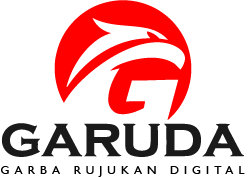LINE TODAY DAN KUALITAS JURNALISME INDONESIA: STUDI EMPIRIK DAN META-ANALISIS KUALITATIF PADA AGREGATOR BERITA DIGITAL
Abstract
This article aims to offer a conceptual study of the impacts of adjusting news writing that follow the presentation criteria and information distribution of LINE Today news aggregator. Through a literature review of various studies to obtain the relevant data on the impact of news aggregators on journalism and qualitative meta-synthesis to map out the concept networks from previous researches then synthesized to answer the research questions. This article provides a number of conceptualizations for further study development. This article addresses the impact of LINE Today news aggregators and the current conceptualization of the digital journalism industry based on three perspectives, namely: news presentation and reader preferences, newsroom & gatekeeping process; digital journalism industry practice and news aggregator.
Keywords
Full Text:
PDFReferences
Cahyo, D. (2017). LINE Today, Media Yang Merebut Hati Masyarakat. Retrieved 20 March, 2020, from DewinaJournal. http://dewina-journal.foutap.com/line-today-media-yang-merebut-hati-masyarakat/
Carlson M (2007) Order versus access: News search engines and the challenge to traditional journalistic roles. Media, Culture & Society 29(6): 1014–1030.
Carlson, M., & Usher, N. (2016). News Startups as Agents of Innovation. Digital Journalism, 4(5), 563–581. https://doi.org/10.1080/21670811.2015.1076344
Castells, Manuel. (2011). The Rise of a Network Society: The Information Age. Chichester: Wiley.
Choi, S., & Kim, J. (2017). Online news flow: Temporal/spatial exploitation and credibility. Journalism: Theory, Practice & Criticism, 18(9), 1184–1205. https://doi.org/10.1177/1464884916648096
Chyi, H. I., Lewis, S. C., & Zheng, N. (2016). Parasite or Partner? Coverage of Google News in an Era of News Aggregation. Journalism & Mass Communication Quarterly, 93(4), 789–815. https://doi.org/10.1177/1077699016629370
Dewan Pers. (2018). Media Siber Dominasi Pengaduan. Dewan Pers. Retrieved 20 March, 2020, from https://dewanpers.or.id/berita/detail/1051/Media-Siber-Dominasi-Pengaduan#
Finlayson, K., & Dixon, A. (2008). Qualitative meta-synthesis: A guide for the novice. Nurse Researcher, 15(2), 59–71.
Gilson, L. L., & Goldberg, C. B. (2015). Editors’ Comment: So, What Is a Conceptual Paper? Group and Organization Management, 40(2), 127–130. https://doi.org/10.1177/1059601115576425
Graefe, A., Haim, M., Haarmann, B., & Brosius, H.-B. (2018). Readers’ perception of computer-generated news: Credibility, expertise, and readability. Journalism, 19(5), 595–610. https://doi.org/10.1177/1464884916641269
Haim, M., Graefe, A., & Brosius, H. (2018). Burst of the Filter Bubble? Digital Journalism, 6(3), 330–343. https://doi.org/10.1080/21670811.2017.1338145
Hardy, J. (2017). Money, (Co)Production and Power. Digital Journalism, 5(1), 1–25. https://doi.org/10.1080/21670811.2016.1152162
Hermans, L., & Drok, N. (2018). Placing Constructive Journalism in Context. Journalism Practice, 12(6), 679–694. https://doi.org/10.1080/17512786.2018.1470900
Kavanaugh, A., Ahuja, A., Gad, S., Neidig, S., Pérez-Quiñones, M. A., Ramakrishnan, N., & Tedesco, J. (2014). (Hyper) local news aggregation: Designing for social affordances. Government Information Quarterly, 31(1), 30–41. https://doi.org/10.1016/j.giq.2013.04.004
Leary, H., & Walker, A. (2018). Meta-Analysis and Meta-Synthesis Methodologies: Rigorously Piecing Together Research. TechTrends, 62(5), 525–534. https://doi.org/10.1007/s11528-018-0312-7
Nakano, D., & Muniz Jr., J. (2018). Writing the literature review for empirical papers. Production, 28(March), 0–9. https://doi.org/10.1590/0103-6513.20170086
Parahita, T. A. (2019). Analisis Isi Tingkat Keberimbangan Berita Rubrik News Dan Showbiz Yang Disajikan Dalam Portal Berita Line Today. Interaksi Online, 26(2), 21–42. https://ejournal3.undip.ac.id/index.php/interaksi-online/article/view/23340/21325
Pearson, G. D. H., & Kosicki, G. M. (2017). How Way-Finding is Challenging Gatekeeping in the Digital Age. Journalism Studies, 18(9), 1087–1105. https://doi.org/10.1080/1461670X.2015.1123112
Perry, A., & Hammond, N. (2002). Systematic Review: The Experience of a PhD Student. Psychology Learning and Teaching, 2(1), 32-35.
Pratomo, F. C. (2019). Mengenal Over The Top (OTT) Communication Services dan Pengaturannya di Indonesia. Bahasan.Id. Retrieved 20 March, 2020, from https://bahasan.id/fauzipratomo/mengenal-over-the-top-ott-communication-services-dan-pengaturannya-di-indonesia/
Prihastomo, W. (2019). Lebih Mudah dan Praktis, Aplikasi Agregator Berita Makin Laris. Nextren. Retrieved 20 March, 2020, from https://nextren.grid.id/penulis/8516/wahyu-prihastomo
Sardar, Z. (2010). The Namesake: Futures; futures studies; futurology; futuristic; foresight—What’s in a name? Futures, 42(3), 177–184. https://doi.org/10.1016/j.futures.2009.11.001
Sydnor, E., & Psimas, D. (2017). Easing Political Digestion: The Effects of News Curation on Citizens’ Behavior. Journal of Information Technology & Politics, 14(3), 189–213. https://doi.org/10.1080/19331681.2017.1345705
Van der Haak, Bregje, Michael Parks, and Manuel Castells. (2012). “The Future of Journalism: Networked Journalism.” International Journal of Communication 6: 2923–2938. http://ijoc.org/index.php/ijoc/article/view/1750/832
Webster, Frank. (2006). Theories of the Information Society. Oxon: Routledge
Wendelin, M., Engelmann, I., & Neubarth, J. (2017). User Rankings and Journalistic News Selection. Journalism Studies, 18(2), 135–153. https://doi.org/10.1080/1461670X.2015.1040892
DOI: https://doi.org/10.22515/ajdc.v1i1.3311
Refbacks
- There are currently no refbacks.

